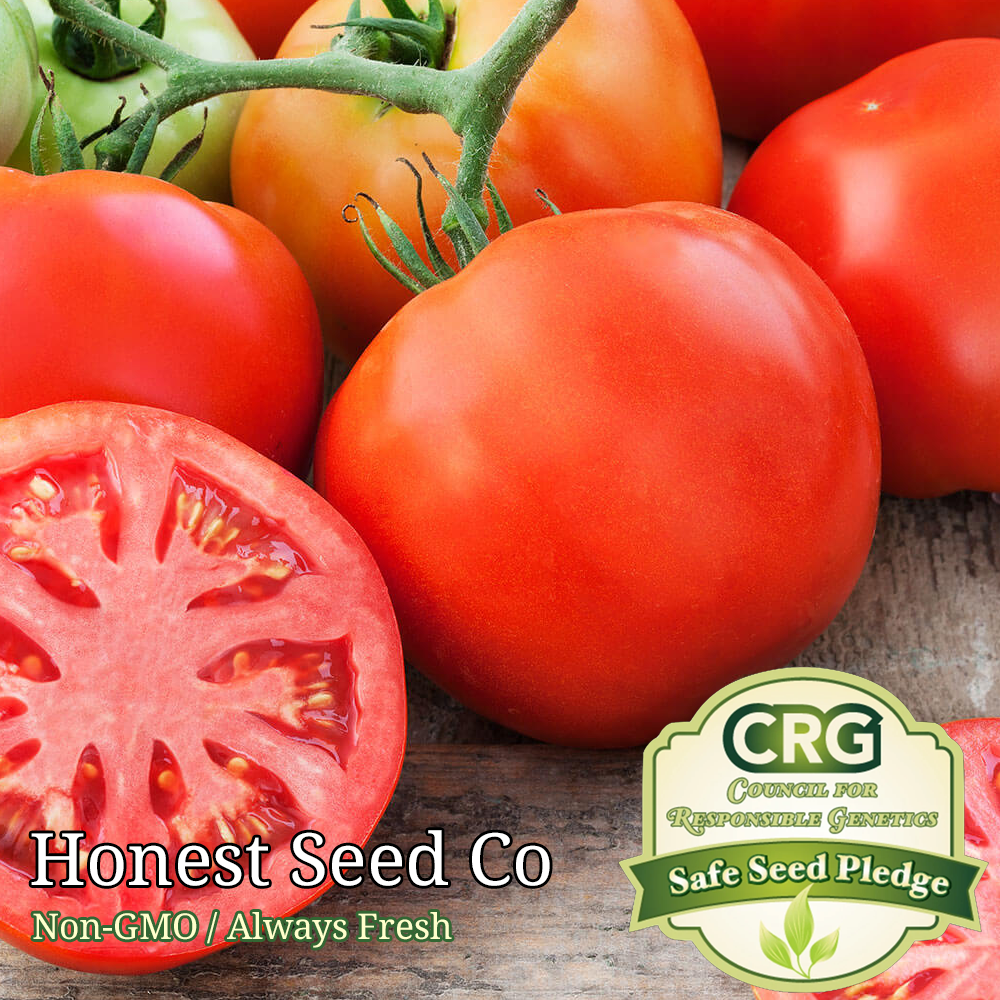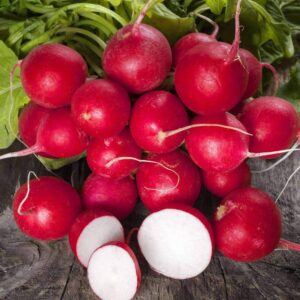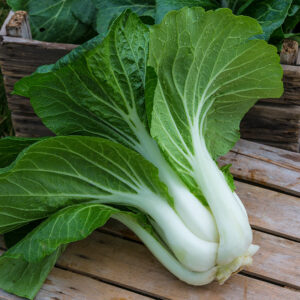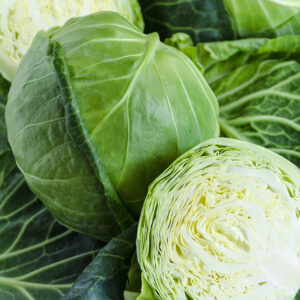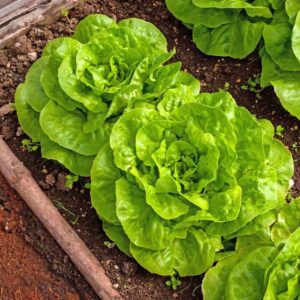100+ Beefsteak Tomato Seeds
Beefsteak is a very popular old standby for a large red garden tomato! It grows delicious tomatoes that are very bright red, juicy, solid, and often weigh more than a pound. The vines are vigorous and are mostly grown in home gardens and should be staked. It matures in 85 days. Indeterminate.
Type: Open Pollinated, Heirloom, Indeterminate, Warm Season
USDA Zones: 3, 4, 5, 6, 7, 8, 9, 10, 11, 12
Planting Method: From Transplant
Sunlight: Full Sun
Height: 80 Inches
Color: Red
Sowing: Start tomatoes indoors 6-8 weeks before the last frost of spring, sowing the seeds in a flat 1/4″ deep and 1″ apart. Keep the temperature at 70-75 degrees F until germination, as well as providing adequate light in a sunny window or under a grow light; keep the soil moist, but make sure drainage is adequate. When the second set of leaves emerges, transplant the seedlings into individual pots; bury the stems up to the lowest set of leaves to grow strongly rooted plants. A week before planting the seedlings outside, begin exposing them to the weather during the day to harden them; tomatoes cannot endure cold weather, and should not be transplanted outside until all threat of frost has passed. When the soil temperature reaches at least 70 degrees F, plant the seedlings in full sun and very rich soil; once more, bury the entire stem up to the lowest set of leaves. If providing a trellis, space the plants 2′ apart, but if allowing the vines to spread, space the plants 3-4′ apart. For companion planting benefits, plant tomatoes with carrots or onions, but avoid planting them with cabbage or tomatoes.
Growing: Indeterminate tomato varieties often perform best when provided with a trellis or support, since this protects them from various pests and diseases in connection with too much soil contact. Put the supports in place before the seedlings develop vines. As the vines begin to grow, tying them to the support helps their development. Since temperatures below 55 degrees F can damage production, protect the plants if temperatures drop. A thick layer of mulch helps conserve moisture and control weeds; water the plants once a week, but avoid getting the leaves wet. Pruning the “suckers,” or shoots that grow between the main stem and the branches, will greatly improve the production and strength of the plant.
Harvesting: Test the ripeness of tomatoes by pressing them gently; the flesh should yield slightly. The mature color also indicates ripeness. If the stem does not come easily off the vine, cut it with a scissors. Vine ripened tomatoes have the best flavor, but as soon as frost comes, all tomatoes should be harvested, even the green ones. Unripe tomatoes will ripen eventually if kept in a warm place out of direct sunlight.


